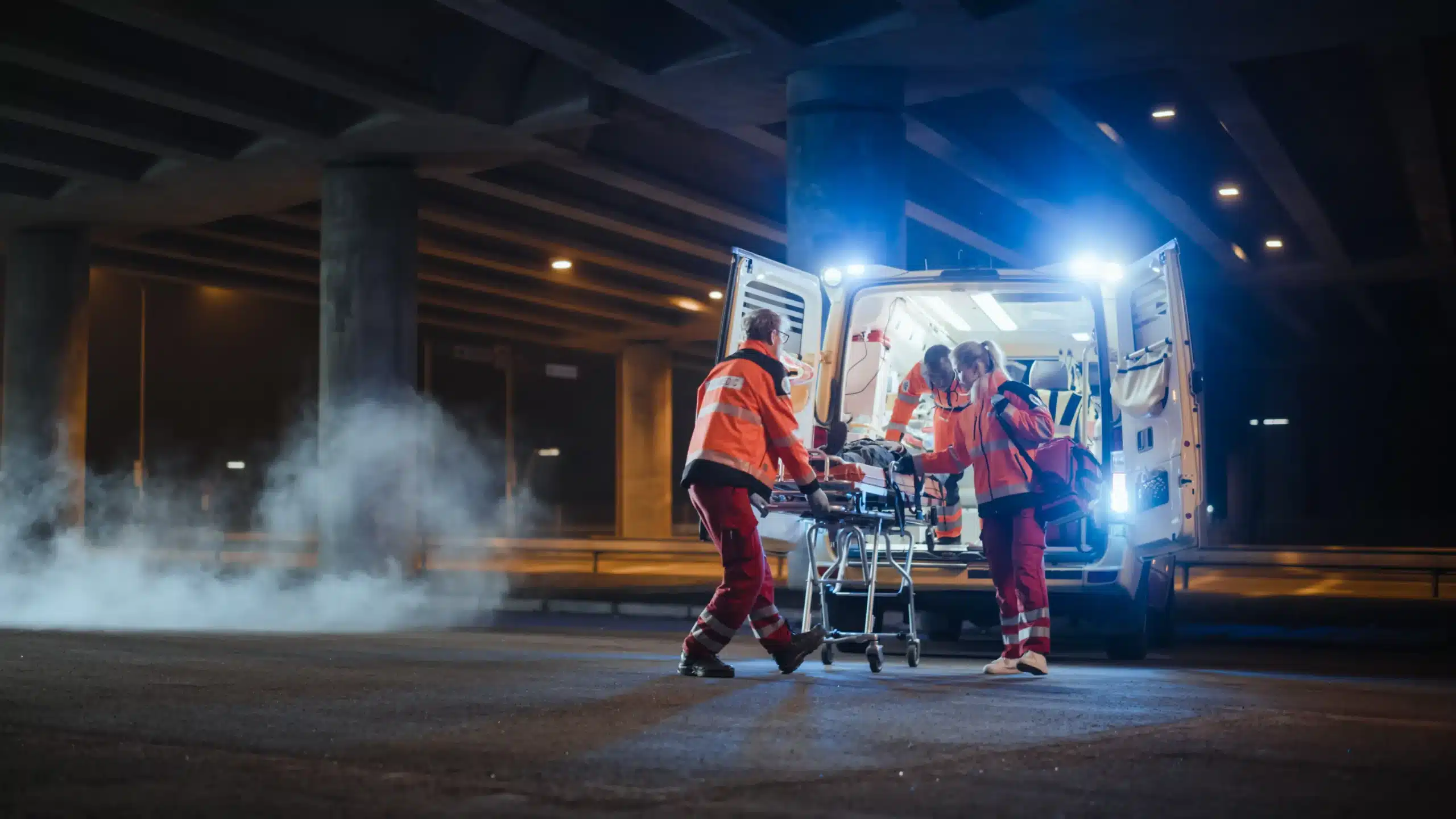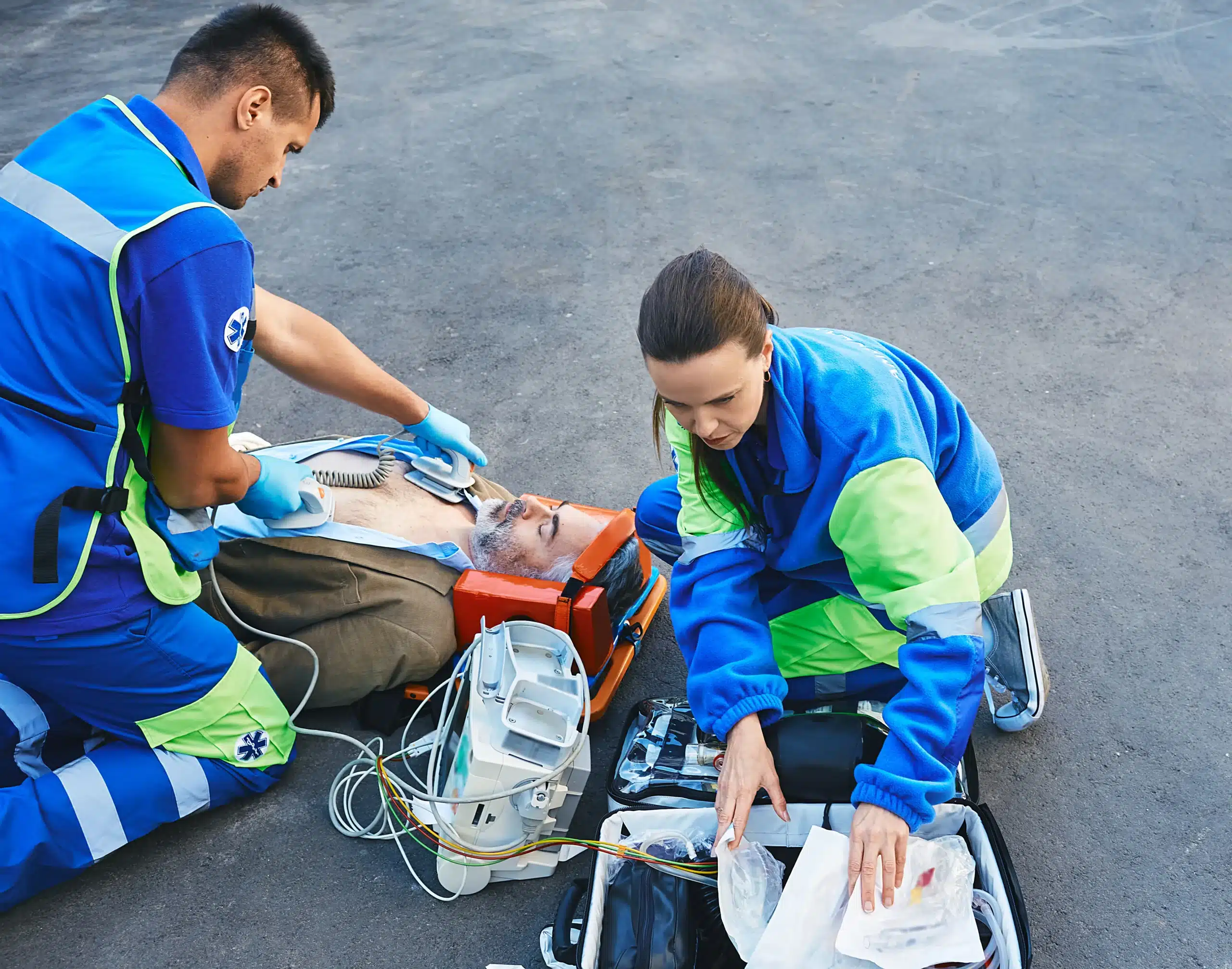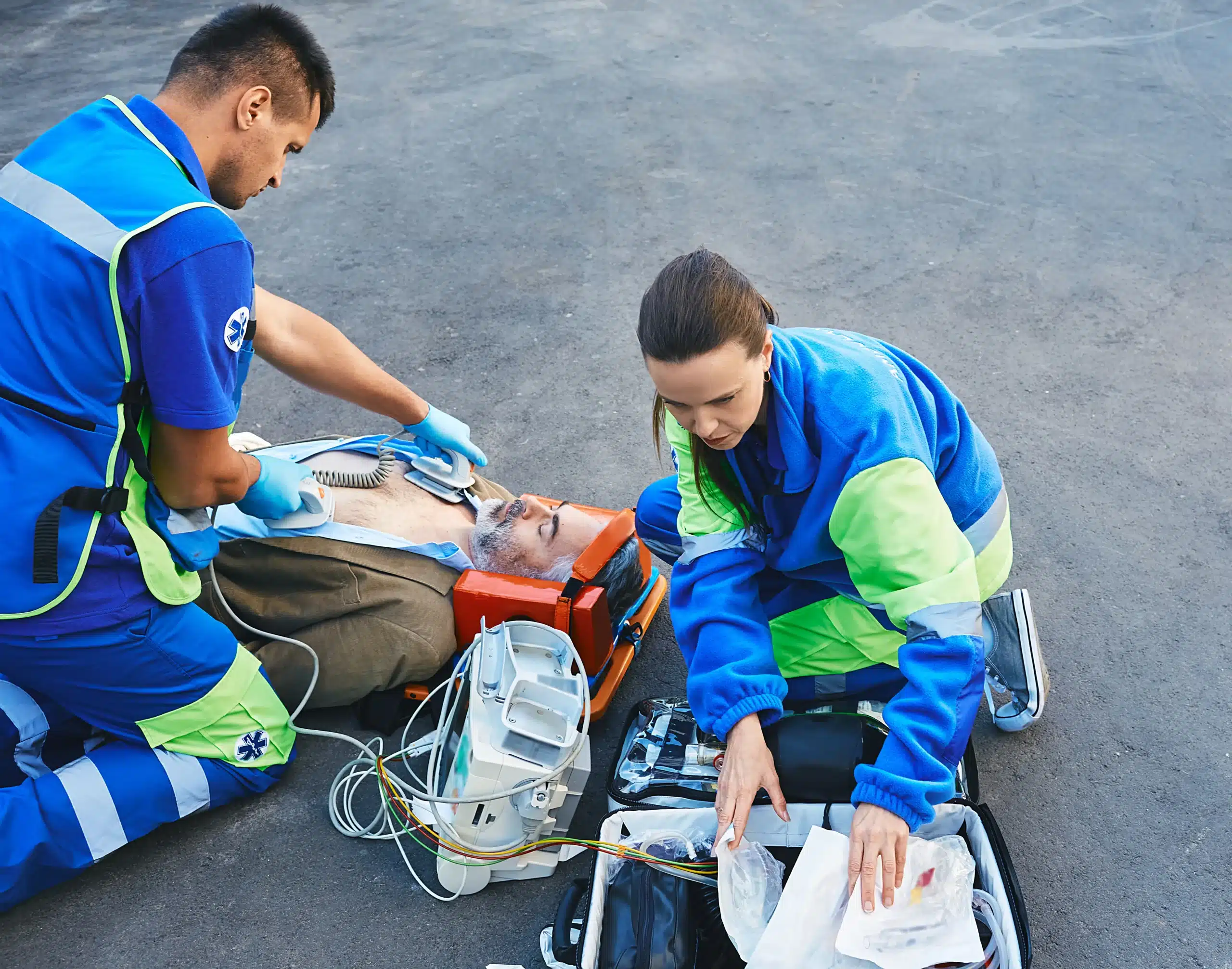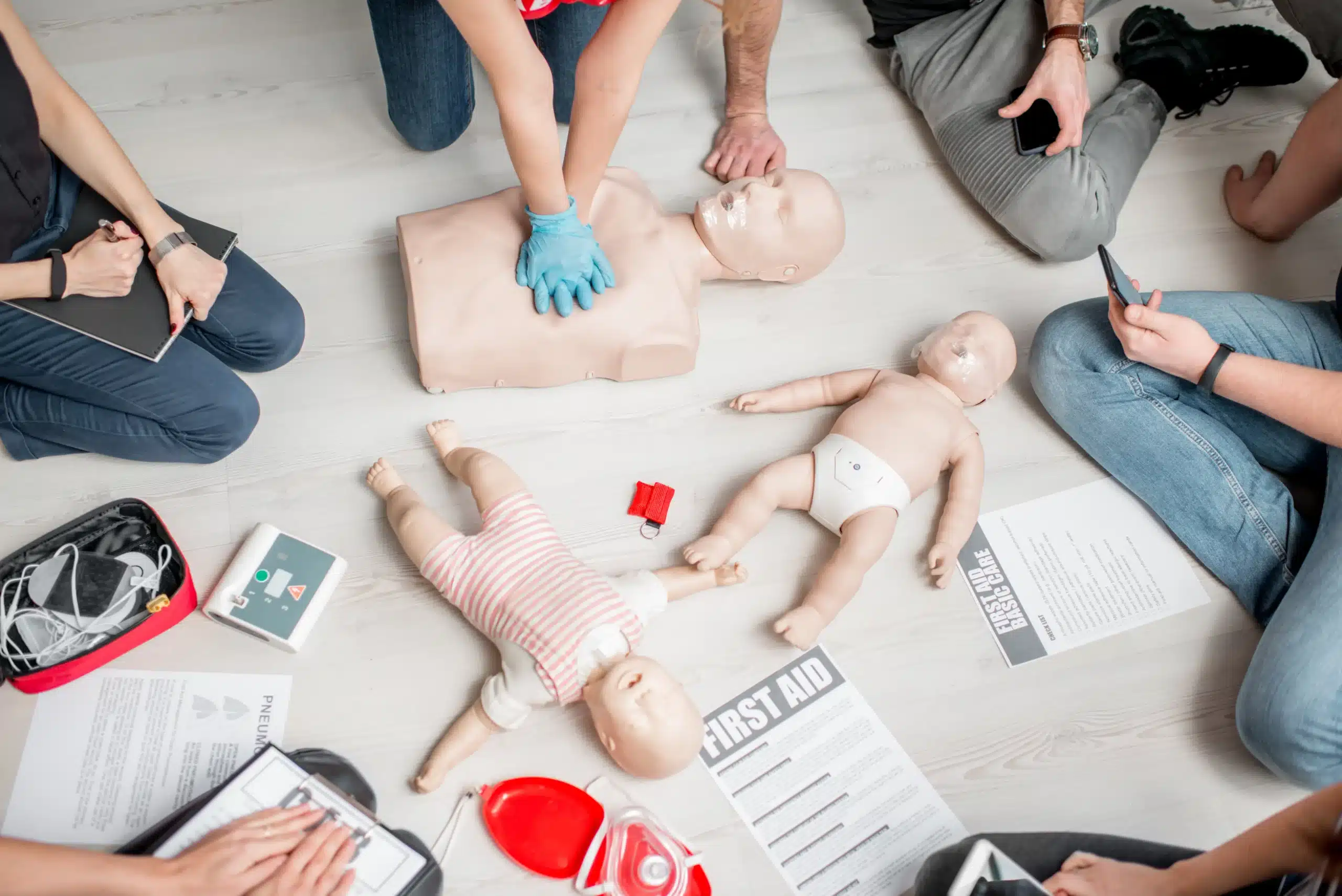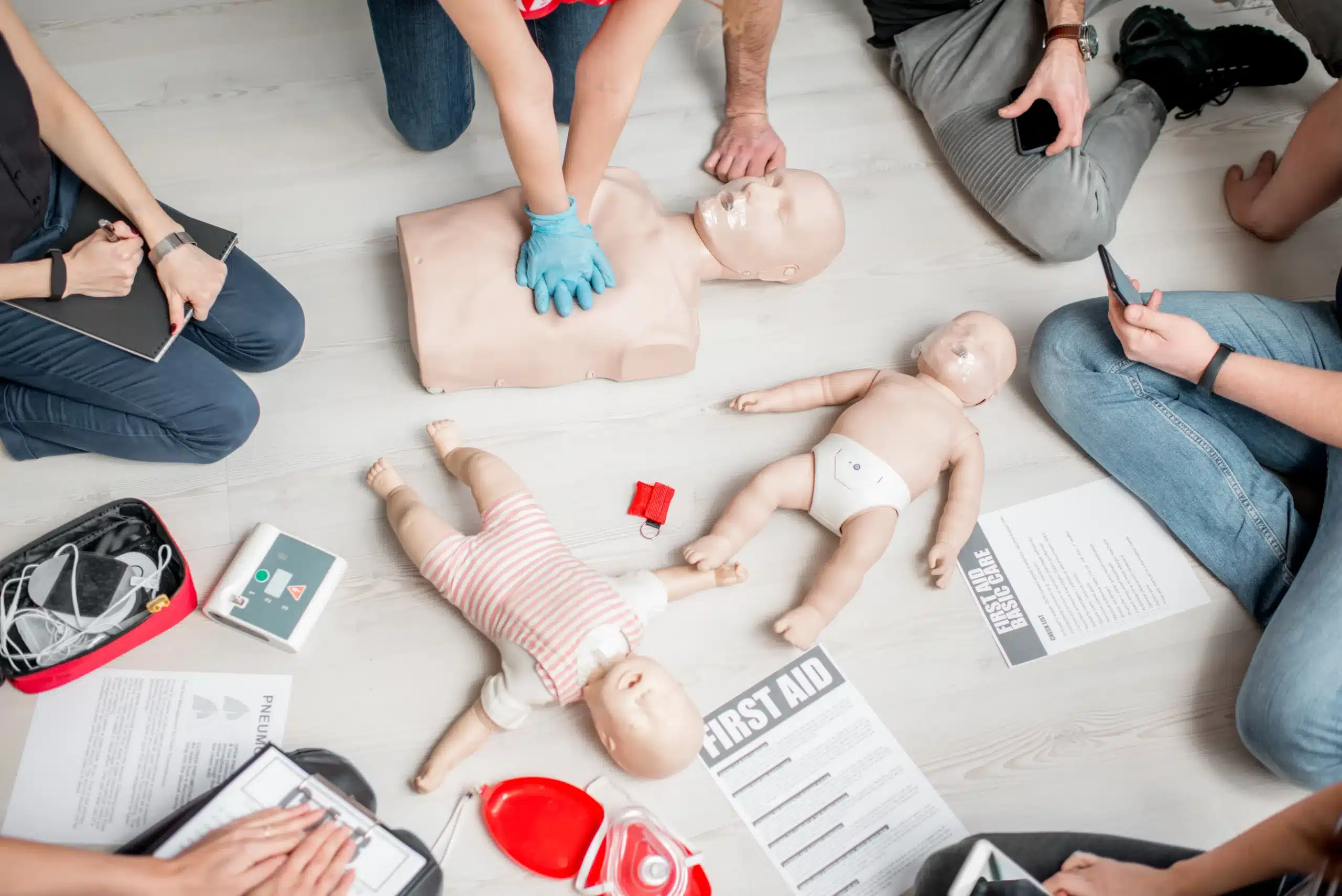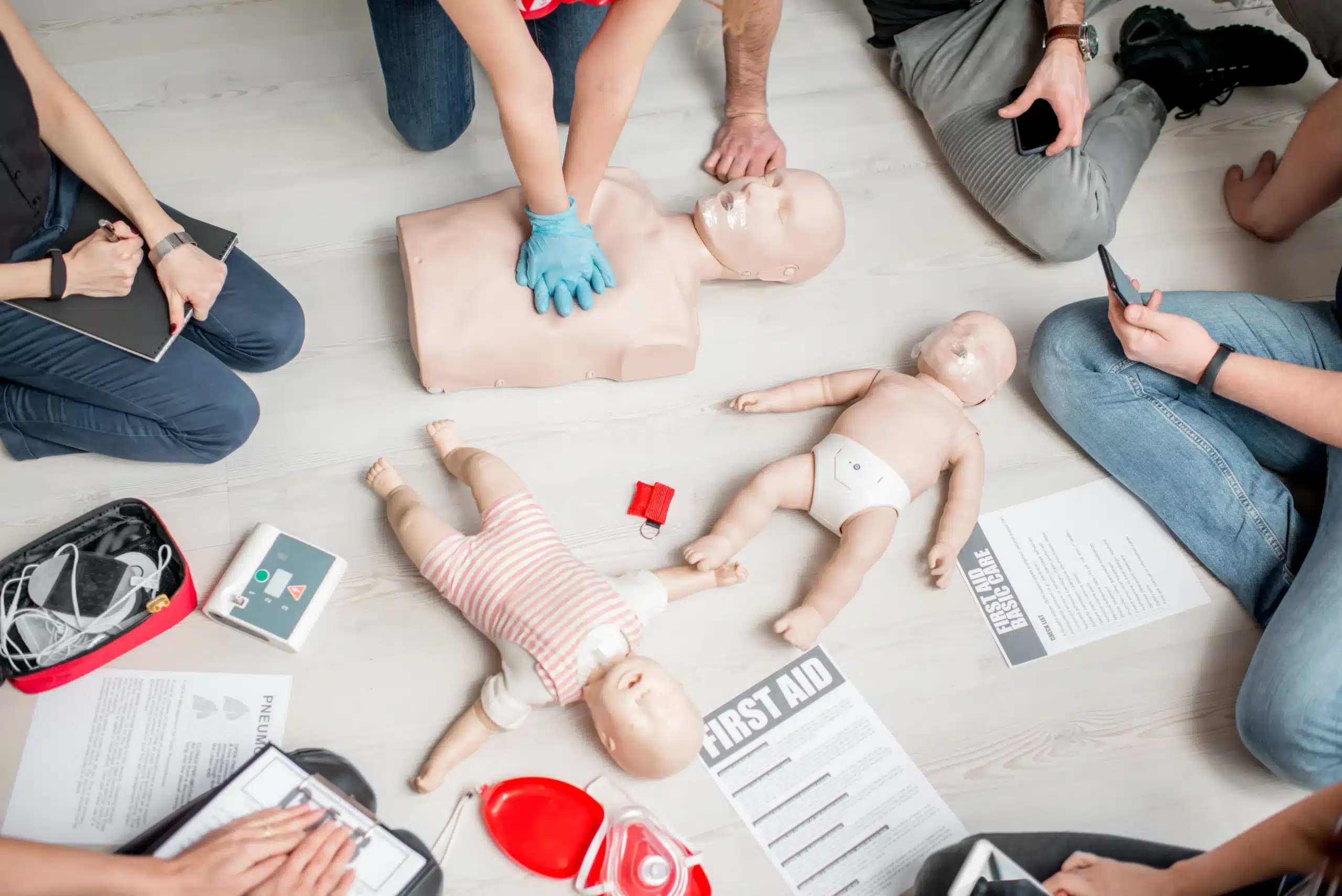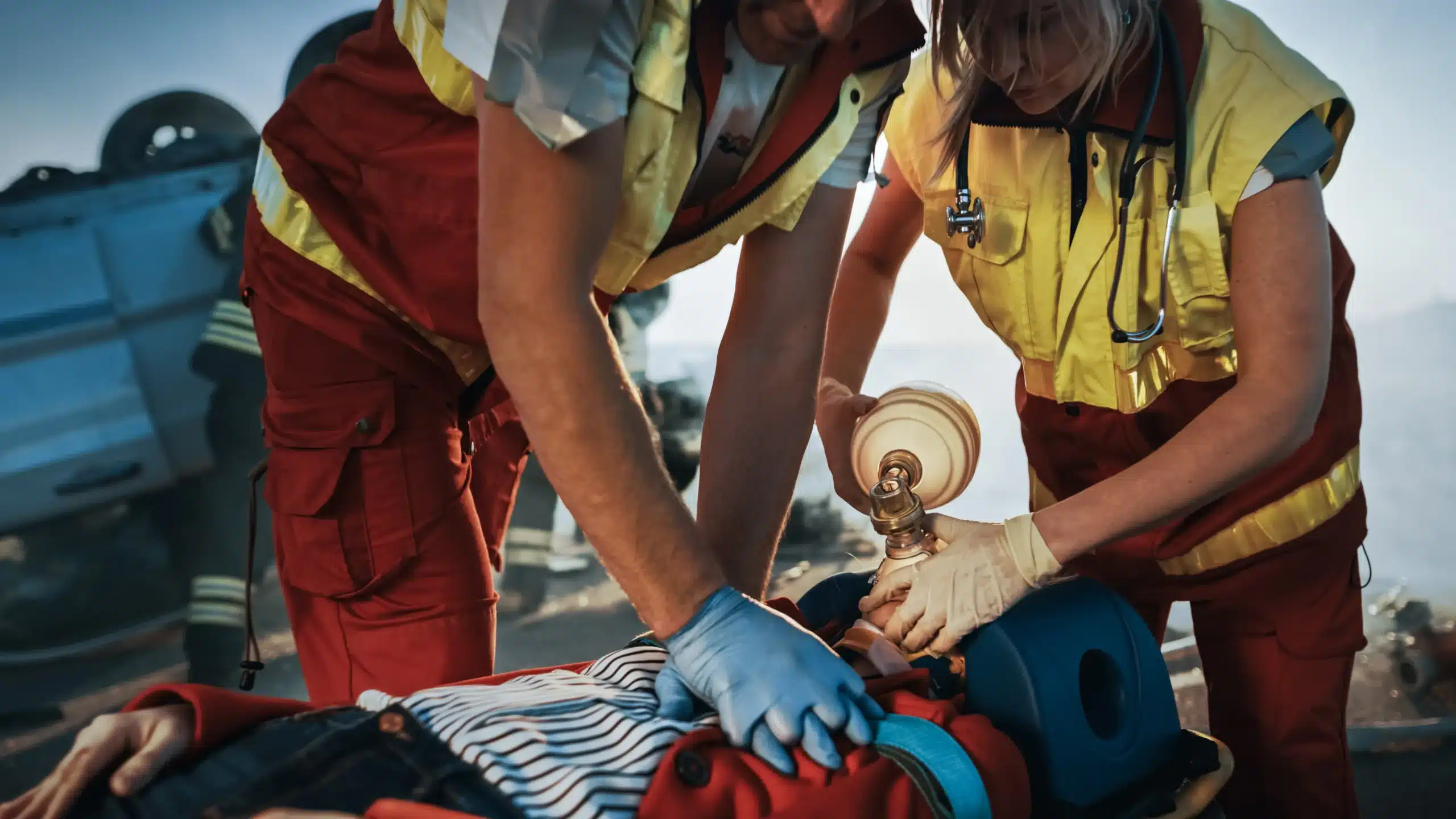Finding “BLS classes near me” is the first step in a journey toward confidence and preparedness. Basic Life Support (BLS) certification empowers you to respond effectively in medical emergencies, providing crucial care until professional help arrives. This guide will answer your questions about BLS certification, including what skills you’ll learn, how to choose the right class format, and what to expect during training. We’ll also discuss the importance of accreditation, instructor qualifications, and the value of hands-on learning. Whether you’re a healthcare professional or simply want to be prepared for anything, this guide will help you find the perfect BLS class in Walnut Creek, Concord, or Pleasant Hill.
Key Takeaways
- BLS builds essential life-saving skills: Beyond CPR, BLS training equips you with techniques for using an AED, managing airways, and responding to various emergencies. Explore different course formats to find the best fit for your needs.
- Select a reputable BLS provider: Prioritize AHA-approved certification, experienced instructors, and hands-on practice. Consider class size, cost, and any additional fees when choosing a course.
- Local training offers personalized support: Benefit from direct interaction with instructors, immediate feedback, and hands-on learning with essential equipment. Connect with peers and build valuable relationships within your community.
What is BLS?
Basic Life Support (BLS) certification is a vital credential for healthcare providers, but there’s often confusion about what it entails. BLS focuses on providing immediate care to someone experiencing a life-threatening emergency, such as cardiac arrest, respiratory distress, or an obstructed airway. It emphasizes early recognition and intervention to improve patient outcomes. BLS certification equips you with the skills to respond effectively in these critical situations. While anyone can learn BLS, it’s a particularly important certification for healthcare professionals, including doctors, nurses, paramedics, and other first responders. It’s also relevant for those working in roles like lifeguarding, coaching, or childcare. Learn more about our BLS certification course.
Key BLS Skills
BLS training covers a range of life-saving techniques. You’ll learn how to perform high-quality CPR, including chest compressions and rescue breaths, and how to use an automated external defibrillator (AED). BLS also includes training on relieving choking and basic airway management techniques. These skills are essential for responding effectively to emergencies and providing immediate care until more advanced medical help arrives.
BLS vs. CPR: What’s the Difference?
While CPR is a core component of BLS, there are key differences. CPR focuses primarily on chest compressions and rescue breaths for someone who has stopped breathing or has no pulse. BLS encompasses CPR but goes further, incorporating additional skills like using an AED, managing airways, and providing ventilation. Think of BLS as a more comprehensive approach to life support, building upon the foundation of CPR. BLS is designed for healthcare professionals and first responders, while CPR certification is often recommended for anyone who wants to learn basic life-saving skills. The Red Cross offers more information on the differences between BLS and CPR certification.
Types of BLS Classes
Choosing the right BLS class format depends on your learning style, schedule, and preferences. Let’s break down the main options: in-person, online, and blended learning.
In-Person BLS
In-person BLS classes offer a traditional classroom setting with hands-on training and direct interaction with an instructor. This format is ideal for people who learn best through direct instruction, demonstrations, and hands-on practice. The structured environment can also be helpful for staying focused. You’ll receive immediate feedback and have the opportunity to ask questions in real-time. Safety Training Seminars offers in-person BLS classes in Walnut Creek.
Online BLS
Online BLS classes offer flexibility and convenience, allowing you to complete the coursework at your own pace from anywhere. While the online portion covers essential knowledge and theory, the American Heart Association (AHA) requires an in-person skills assessment to receive your BLS certification. This means there isn’t a fully online AHA-certified BLS course. The online component is a great option for refreshing your knowledge or fitting the coursework into a busy schedule. Check out our BLS page for more information.
Blended Learning BLS
Blended learning combines online learning with in-person skills practice. This format allows you to study the theoretical material online at your own pace, then attend an in-person session to demonstrate your skills and receive your certification. Blended learning offers a flexible yet comprehensive approach to BLS training. RQI classes are an example of blended learning. They let you renew your BLS certification through a combination of online learning and in-person skills validation.
Find BLS Classes Near You
Finding the right BLS certification class is easier than you think, especially with the resources available today. Whether you’re a healthcare provider or just want to learn this valuable skill, here’s how to find a class that works for you:
Use Online Search Tools
Start with a simple online search. Use specific keywords like “BLS classes near me” or “American Heart Association BLS Walnut Creek” to narrow down your options. You can also use broader terms like “CPR certification” and filter by BLS. Many training centers, like Safety Training Seminars, have websites listing their course schedules and locations. A quick search helps you compare options and saves you time. Check reviews and ratings to understand other students’ experiences. An AHA-approved certification is essential for most employers, so always verify the provider’s accreditation.
Check Local Healthcare Facilities
Hospitals and clinics frequently offer BLS classes for their staff and the surrounding community. Contact your local hospitals, doctor’s offices, or urgent care centers to ask about upcoming courses. These facilities often have experienced instructors and offer high-quality training. BLS certification is essential for healthcare providers because it improves patient outcomes in critical situations. And remember that BLS certification requires renewal, so a convenient local option makes it easier to maintain your skills.
Contact Professional Associations
Professional organizations related to healthcare or your specific field can be valuable resources. Groups like the American Medical Association or nursing associations sometimes keep lists of approved BLS training providers. They can also offer advice on choosing a reputable program. American Health Training, for example, emphasizes choosing certified providers to ensure you receive accurate and current information. Getting certified through a recognized organization ensures your BLS skills meet industry standards.
What Happens in a BLS Class?
Taking a BLS class is a rewarding experience, especially knowing you’re gaining skills that can save a life. Here’s a preview of what you can expect:
Course Structure and Duration
BLS classes typically involve a combination of interactive lectures, demonstrations, and hands-on practice. You’ll work with training manikins to simulate real-life scenarios, allowing you to build muscle memory and confidence in your skills. Expect to learn the proper techniques for chest compressions, rescue breaths, and using an automated external defibrillator (AED). Many courses, like those offered at Safety Training Seminars, also cover basic airway management and how to help someone who is choking. The duration of a BLS class can vary, but most providers offer options ranging from a few hours to a full day.
Essential Skills You’ll Learn
In a BLS class, you’ll master essential lifesaving skills, including CPR, AED use, and how to clear an obstructed airway. These procedures are taught for adults, children, and infants, ensuring you’re prepared for various emergencies. BLS training emphasizes the importance of teamwork and clear communication during a crisis. You’ll learn how to quickly assess a situation, activate the emergency response system, and provide effective care until professional help arrives. These skills are invaluable for anyone, not just healthcare professionals, empowering you to respond confidently in critical situations. Check out our BLS certification page for more information.
Certification: How It Works
Upon successful completion of a BLS class, you’ll receive a certification card. This certification is typically valid for two years. It’s a crucial credential for many healthcare providers and other professionals, demonstrating your competence in providing basic life support. Remember to renew your certification before it expires to maintain your skills and qualifications. Staying current with the latest guidelines ensures you’re always prepared to provide the most effective care. You can find more details about our certification process on our RQI classes page.
Choose the Right BLS Provider
Finding the right BLS class involves more than just a convenient location. It’s about making sure you’re getting top-notch training that meets industry standards and prepares you to handle real-life emergencies. Here’s what to look for when choosing a BLS provider:
Accreditation and Certification
First things first, confirm the course is AHA-approved. The American Heart Association (AHA) sets the gold standard for BLS certification, and many employers require these credentials. This guarantees your training aligns with nationally recognized guidelines. Don’t hesitate to ask the provider about their AHA affiliation and double-check their status on the AHA website.
Instructor Qualifications
Experienced, AHA-certified instructors make a real difference in how much you learn. Look for instructors with real-world experience, not just textbook knowledge. A skilled instructor can offer practical tips, answer your questions clearly, and create a comfortable learning environment. Check the provider’s website or ask about the instructors’ backgrounds and experience.
Class Size and Equipment
The best BLS classes prioritize hands-on, in-person training. This is essential for developing crucial skills like CPR and using an AED. While online components can be useful additions, they shouldn’t replace hands-on practice. Ask about the class size and make sure it allows for individual attention and plenty of practice time with mannequins and other equipment. Smaller classes often mean more personalized feedback and a richer learning experience. Safety Training Seminars emphasizes hands-on learning to build your confidence and equip you with the skills to perform BLS effectively.
BLS Class Costs & Value
Understanding the cost of BLS certification and what you get for your money is an important part of choosing the right class. Let’s break down the typical costs, extra fees to watch out for, and ways you can save.
Average Costs
BLS certification classes typically range from $70 to $90. This price usually covers your instruction, training materials, and the certification card itself. For example, some providers offer BLS certification for $74.95. Keep in mind that prices can vary based on location and the training center. It’s always a good idea to check directly with the provider for the most up-to-date pricing.
Additional Fees
While the base cost of a BLS class covers the essentials, be sure to check for any additional fees before you register. Some providers might charge extra for things like online access to course materials, practice tests, or expedited certification card delivery. Visiting the provider’s website is the best way to get a clear picture of all potential costs and avoid any surprises. Look for a transparent breakdown of fees associated with different class formats or supplementary materials.
Discounts and Promotions
One of the best ways to save on BLS certification is to look for discounts and promotions. The American Red Cross often has promotions on training materials and other supplies. Many providers also offer discounts for groups, students, or returning customers. Some training centers highlight perks like same-day certification cards as part of their value proposition. Don’t hesitate to ask about potential discounts – it never hurts to inquire! Finding a deal can make quality training even more accessible.
BLS Class Prerequisites
Thinking about signing up for a BLS class? Great! This section covers the typical requirements. It’s always a good idea to double-check with your chosen provider, like Safety Training Seminars, for their specific guidelines.
Age Restrictions
Most BLS courses are designed for people working in healthcare or roles requiring emergency response skills. While the exact age restrictions can vary, many courses recommend participants be at least 16 years old to ensure students have the maturity to understand the material. For example, the American Heart Association (AHA) offers BLS training primarily for healthcare professionals, which typically includes individuals 16 and older.
Prior Knowledge
You don’t need prior medical knowledge to take a BLS class. The classes cater to all levels, from beginners to those renewing their certification. A basic understanding of first aid and CPR is helpful, but not mandatory. The American Red Cross clarifies that their BLS course welcomes both new learners and those refreshing their skills.
Required Materials
Most BLS courses provide everything you need—textbooks, training equipment, etc.—during the class itself. Some courses may have an online component you’ll complete beforehand on your computer or phone. For instance, the Baptist Health South Florida BLS course includes a comprehensive training session covering CPR, AED use, and choking relief, with all materials included in the course fee. This is a common practice, so check with your provider about their specific materials policy.
Benefits of Local BLS Training
Choosing a local BLS class offers distinct advantages over online or distant learning options. Here’s why learning BLS in your community matters:
Hands-on Learning
BLS isn’t just theoretical; it’s practical. In a local class, you’ll work directly with essential equipment like AEDs and practice techniques for airway management and assisting someone who is choking. This hands-on training builds confidence and muscle memory, crucial for effective response in real emergencies. Plus, many people find it easier to grasp these skills through physical practice rather than online simulations. Local classes provide the space and equipment for this vital, hands-on learning. You’ll gain experience with the tools and techniques that can make a real difference in a crisis.
Immediate Feedback and Support
Local BLS classes offer immediate feedback from certified instructors. They can correct your technique in real-time, answer your questions directly, and provide personalized support. This face-to-face interaction strengthens your understanding and helps you master the skills quickly and effectively. It’s this direct interaction and support that can boost your confidence and competence. You’ll have the opportunity to ask questions, clarify doubts, and receive tailored guidance to improve your skills.
Networking
Local BLS classes connect you with other professionals and community members. This networking opportunity can be invaluable, especially for healthcare providers. You can share experiences, learn from others, and even discover potential job opportunities. Building these local connections can enrich your career and create a sense of community around your BLS skills. It’s a chance to learn from each other and build a support system of like-minded individuals in your area.
Top BLS Providers in Walnut Creek
Finding the right BLS training provider is key to a positive learning experience. Here are a few reputable options in the Walnut Creek area:
Safety Training Seminars
Safety Training Seminars, an American Heart Association Training Center, offers a range of certification courses, including BLS, ACLS, PALS, and CPR. They’re known for flexible scheduling, with classes offered daily, and a commitment to affordable pricing. They also offer an EMSA Child Care Health & Safety course and RQI classes. Check out their low price guarantee. Safety Training Seminars serves Walnut Creek, Concord, and Pleasant Hill.
American Red Cross
The American Red Cross is a trusted name in BLS training nationwide. Their courses blend practical skills with real-world scenarios, giving you the confidence to handle emergencies. Find a BLS course near you through their website.
AHA Training Centers
Several AHA Training Centers in Walnut Creek provide comprehensive BLS courses aligned with the latest AHA guidelines. These centers often offer various courses tailored to different needs, from healthcare providers to community members. Learn more about training centers and the RQI program on the American Heart Association website.
Local Hospitals
Many hospitals in Walnut Creek offer BLS training, often taught by experienced medical professionals. These courses can provide valuable hands-on learning in a clinical setting. Check with hospitals like John Muir Medical Center Walnut Creek or other local facilities for their course schedules.
Common BLS Class Concerns
It’s normal to have a few questions before signing up for a BLS class. Let’s address some common concerns to put your mind at ease.
Course Format and Technology
One common misconception is that BLS certification requires a huge time commitment. In reality, BLS classes are designed to be efficient. You can find a BLS course that fits your schedule, including options for in-person, online, or blended learning. Another concern revolves around technology. Modern BLS courses often incorporate interactive elements and simulations to enhance learning. If you’re worried about keeping up, rest assured that instructors provide ample support and guidance. These tools are there to reinforce practical skills, not make things more complicated. Knowing BLS principles is important for healthcare workers and patient safety.
Instructor Quality
Choosing a course with experienced, AHA-certified instructors makes a big difference. Look for classes taught by professionals with a strong healthcare background and a passion for teaching. Reading online reviews can also give you insights into the instructors, class organization, and overall student experience. Don’t hesitate to contact the training provider if you have questions about instructor credentials or teaching styles.
Certification Renewal
Many people mistakenly believe that BLS training is only for healthcare professionals. The truth is that anyone can benefit from learning these lifesaving skills. BLS certification training includes the use of automated external defibrillators (AEDs), basic airway management, and techniques for assisting someone who is choking. And while certification does expire, the renewal process is straightforward. Refresher courses are readily available to keep your skills current and your certification valid. By understanding these key points, more individuals can pursue BLS certification and recognize its value.
Related Articles
- BLS Certification in Pleasant Hill: A Complete Guide
- BLS Courses in Concord: Find the Right Class for You
- BLS Recertification Near Me: A Complete Guide
- CPR Training in Pleasant Hill: Your Complete Guide
- BLS Training Near Me: A Practical Guide
Frequently Asked Questions
What’s the main difference between BLS and CPR? CPR is a core part of BLS, but BLS is more comprehensive. Think of CPR as focusing on chest compressions and rescue breaths, while BLS adds skills like using an AED and managing airways. BLS training is generally geared towards healthcare providers and those in emergency response roles, while CPR training is often recommended for everyone.
How long does it take to get BLS certified? BLS class times vary depending on the format and provider. You can find classes ranging from a few hours to a full day. Blended learning options, which combine online coursework with in-person skills sessions, offer more flexibility.
How much does a BLS class cost? BLS classes typically cost between $70 and $90, covering instruction, materials, and your certification card. Look for potential discounts for groups, students, or returning customers. Always confirm the total cost with the provider, including any extra fees for online materials or expedited card delivery.
Do I need any prior medical experience to take a BLS class? No prior medical experience is needed. BLS classes are designed for various skill levels, from beginners to experienced healthcare providers renewing their certification. The curriculum starts with the basics and builds your skills step by step.
Where can I find BLS classes near me? Start by searching online for “BLS classes near me” or check with local hospitals, clinics, and community centers. The American Red Cross and the American Heart Association are also excellent resources for finding certified training providers in your area. Look for providers offering AHA-approved courses, which are often required by employers.
